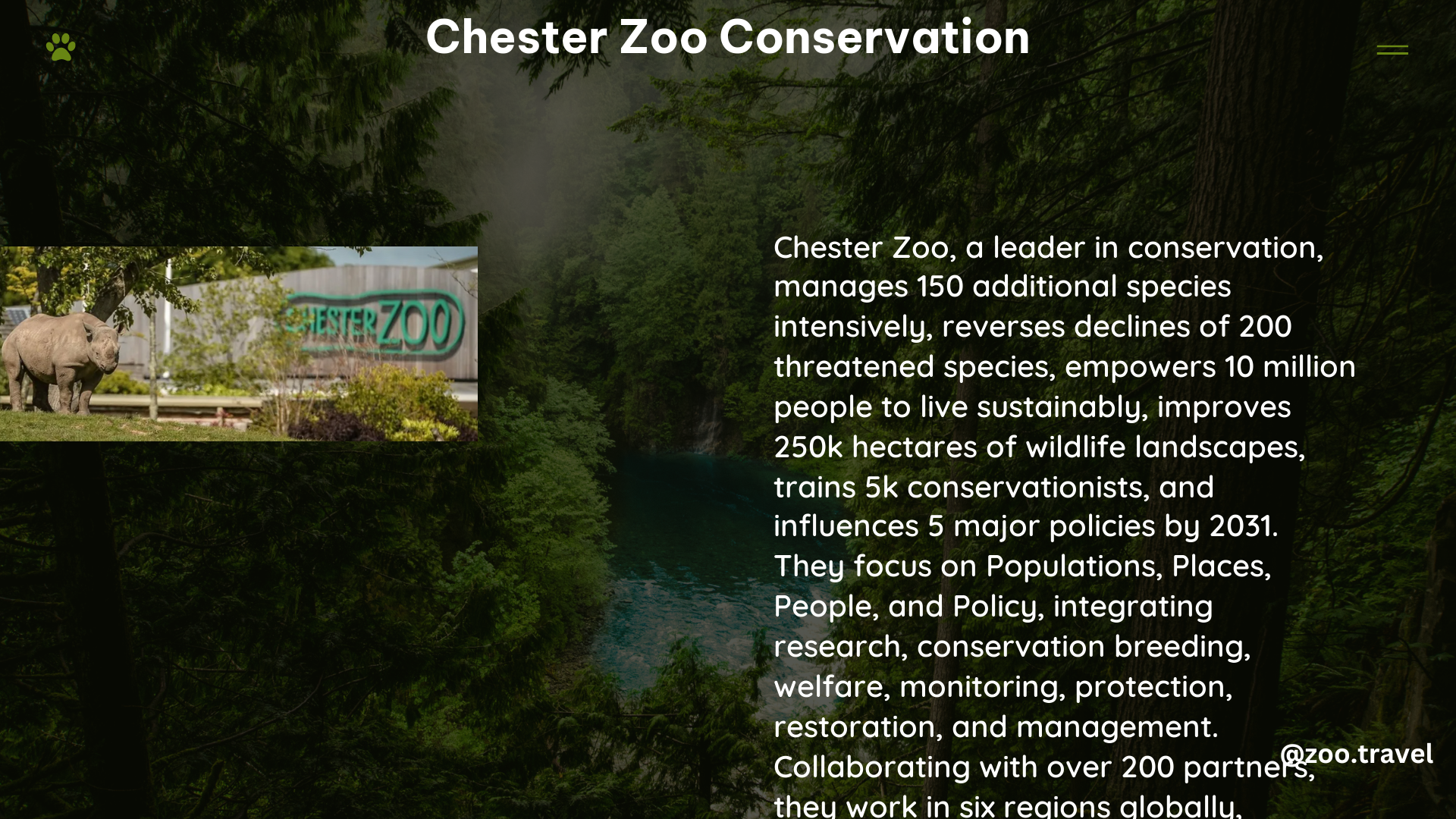Chester Zoo is a leading wildlife charity that is making a vital contribution to tackling the global extinction crisis. With over 27,000 animals from 500 different species, the zoo is dedicated to preventing extinction through its comprehensive conservation efforts.
The Scope of Chester Zoo’s Conservation Work
Chester Zoo’s conservation work spans a wide range of initiatives, including:
-
Conservation Breeding: The zoo’s conservation breeding programs play a crucial role in preserving the genetic diversity of species in zoos across Europe. By working with partners in the European Association of Zoos and Aquariums (EAZA), Chester Zoo is ensuring that the genetic diversity of species is maintained.
-
Conservation Research: The zoo’s team of experts, including conservationists, scientists, and wildlife managers, conduct research that informs decision-making and helps improve the care of the animals and plants under their stewardship. This research also influences the protection and enhancement of biodiversity in the wild.
-
Integrated Conservation Approach: Chester Zoo’s conservation strategy integrates four key areas: populations, places, people, and policy. This holistic approach allows the zoo to address the multifaceted challenges facing wildlife and their habitats around the world.
Chester Zoo’s Global Conservation Footprint

Chester Zoo’s conservation efforts extend far beyond its own premises. The zoo’s team of experts work in six regions around the globe, representing some of the planet’s most biodiverse habitats. These regions include:
-
Southeast Asia: The zoo is actively involved in conservation efforts in Southeast Asia, focusing on species such as the Sumatran tiger, Malayan tapir, and Goodfellow’s tree kangaroo.
-
Africa: Chester Zoo’s conservation work in Africa includes initiatives to protect the western chimpanzee and other endangered species.
-
South America: The zoo’s conservation efforts in South America aim to safeguard the fossa, a unique carnivore found in Madagascar.
-
Europe: Chester Zoo collaborates with partners across Europe to preserve the genetic diversity of species and enhance biodiversity.
Engaging People in Conservation
Chester Zoo recognizes that conservation efforts cannot succeed without the involvement of people. The zoo’s conservation workshops are designed to educate and empower individuals, communities, and policymakers to co-exist and thrive with wildlife, while developing nature-friendly, sustainable lifestyles and livelihoods.
Significant Financial Commitment to Conservation
Chester Zoo’s commitment to conservation is reflected in its financial resources. The zoo spends around £21 million ($25 million) on conservation each year, which accounts for 46% of its total income. This significant investment demonstrates the zoo’s dedication to preventing extinction and preserving biodiversity.
Conservation Breeding Successes
Chester Zoo’s conservation breeding program has achieved remarkable success, with a series of rare births in the last eight months. These include the birth of a Goodfellow’s tree kangaroo, Sumatran tiger twins, a western chimpanzee, a Malayan tapir, a greater one-horned rhino, and a triplet of fossa pups. These births contribute to the preservation of genetic diversity and the prevention of extinction.
In conclusion, Chester Zoo is a leading institution in the field of conservation, with a comprehensive strategy, a dedicated team of experts, and significant financial resources. By integrating populations, places, people, and policy, the zoo is making a vital contribution to tackling the global extinction crisis and preserving the world’s biodiversity.
References:
– Chester Zoo’s Official Website
– Conservation Breeding at Chester Zoo
– Chester Zoo’s Conservation Work
– Chester Zoo’s Conservation Workshops
– Chester Zoo’s Baby Boom
